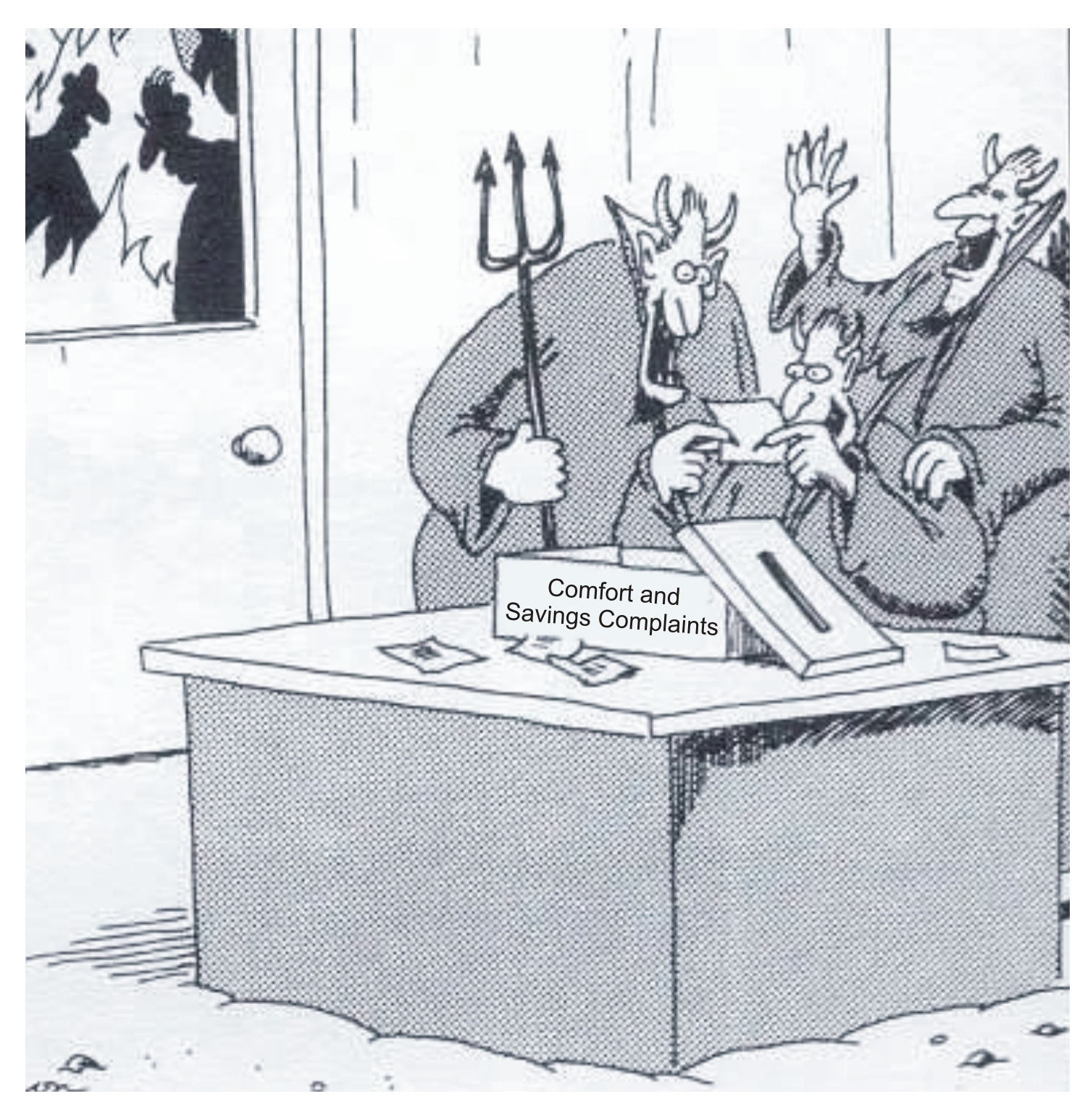
Per the Energy Services Coalition, energy service companies (ESCOs) that deliver energy savings performance contracts do the following:
- Identify and evaluate energy-saving opportunities
- Develop designs and specifications for construction
- Manage the project to installation and monitoring
- Arrange financing
- Train staff and provide ongoing services
- Guarantee savings will cover all project costs
What’s not to like?
A band of demons staked out in the contract details.
I was reminded of this by this noteworthy article published in Buildings magazine. After discussing the author’s points, I will add plenty of my own guardrails to protect energy users from derailing over the cliff into the financial abyss.
The author says his article was inspired by a recent contract, with unbelievably “unclear boilerplate language that would lead to confusion and possible lawsuits in the future”. And this guy is experienced? If so, why would any contract language be unbelievable to him[1]? Perhaps it was a figure of speech. He has five pieces of advice. I have more.
- Make sure maintenance costs are covered. The example the author gives indicates energy and maintenance savings for a 20-year life of a lighting project but no lamp replacement costs that will be incurred.
- Require equipment specifications. The author reminds us of an instance where a chiller of unknown capacity or operating efficiency was included in the performance contract.
- Beware of unsubstantiated stipulated savings and avoided capital expenditures. I have more on this below.
- [Paraphrasing] Equipment does not come with its own logical brains. Ho ho ho, and I am not referring to Santa Claus. Owners have to know how building controls work to save energy – a huge learning curve – one that we live on.
- Make sure measurement and verification costs, covering the entirety of the contract, are included.
- “It makes sense to have someone with experience on your team or to hire an expert consultant.” I have no shame. Hire me, seriously.
Service Contracts
It is interesting that the author has experienced an absence or dearth of maintenance costs mixed in these contracts. My experience has been that energy users with performance contracts are dying to get out of them after implementation. Why? Because the ESCO has stuck them with a perpetual, uber expensive service contract to maintain savings. Or, like change orders, the ESCO charges an arm and a leg every time the untrained building staff has an issue with controls.
Stipulated (Reverse Engineered) Savings
Regarding #3 above, stipulated savings and avoided costs – I’ve seen contracts where avoided maintenance and replacement costs made up the vast majority of the savings on the contract. The energy savings were less than a quarter of the benefits. The performance contractor guarantees energy savings, but almost no savings are required to make the project cash flow. In other words, all, or nearly all, the required benefits to pay for the project were a not-so-random estimate of what it would cost to replace and maintain what they had.
The fact is, commercial systems almost never need to be replaced. There are all kinds of ways to continue to use almost all of what’s in place. In some instances, major equipment will never need to be replaced for the life of the building. It may need a new burner now and then, new motors, bearings, or controls replacement. Make sure money is spent like it’s yours, because it is.
Measurement and Verification
A performance contract should include measurement and verification of savings. If it does, it might be better than nothing. Why might it be barely better than nothing? Because if the ESCO does the whole thing “turnkey”, all the work results in lost profit to them – the time spent doing it and heaven forbid anything needs fixing.
Hire a third party measurement and verification (M&V) contractor. Write a request for proposals with a scope of work to verify implementation of specified equipment and design, control sequences, and a top-down assessment (billing data) of energy savings. Choose a reputable firm that is probably not the lowest price. Only take the low price if it is close to the others.
Actually, to avoid going number one matches (get it?) after the fact, have the M&V firm review the construction documents and control sequences to ensure maximum savings will be achieved. Write the M&V plan before construction starts. Specify what will be verified and how after construction. This will avoid number one matches down the road. This doesn’t need to cost a fortune, and in fact, the first M&V round can be used as a training run for the customer to continue M&V as needed.
Performance contracting can and should be a good thing, but teachers and instructors don’t let the kids grade their own papers.
[1] I’ve read lots of contracts myself, and at this point, literally nothing is unbelievable. See Contracts from Hell. Actually, few contracts don’t come from 1 Hot Place, Hades 66666.






I like the grading paper analogy and agree with the notion of hiring a third party consultant to do M&V on ESPCs completely. Any time there is potential for conflict of interest, corruption can – and most likely will – happen. Act 32 (summary in link below) in Wisconsin “could” let public schools use bad or stipulated M&V to their advantage by allowing their ESCO report “low/stipulated” savings. This allows the school to keep their revenue limits up and levy additional taxes on their constituents. The ESCO has the motivation to do this unethical M&V because it costs them less money and it keeps their customers happy, which feeds the system and starts the process over.
There’s a rather wordy summary of Act 28/32 on the first few pages of this hyperlink in case anyone cares to read more: http://www.performanceservices.com/files/file/act-32-white-paper-revised-3-2-2016.pdf